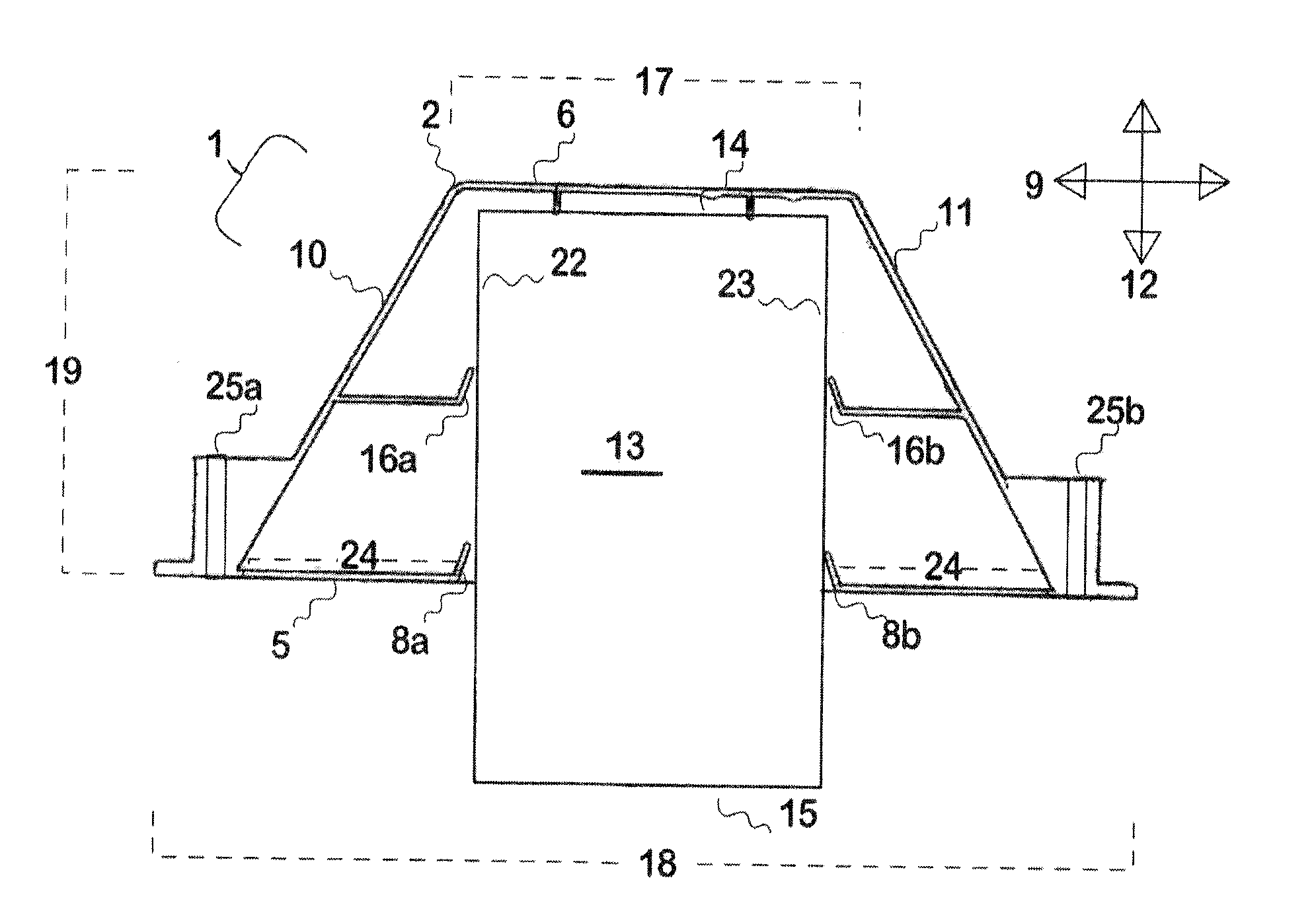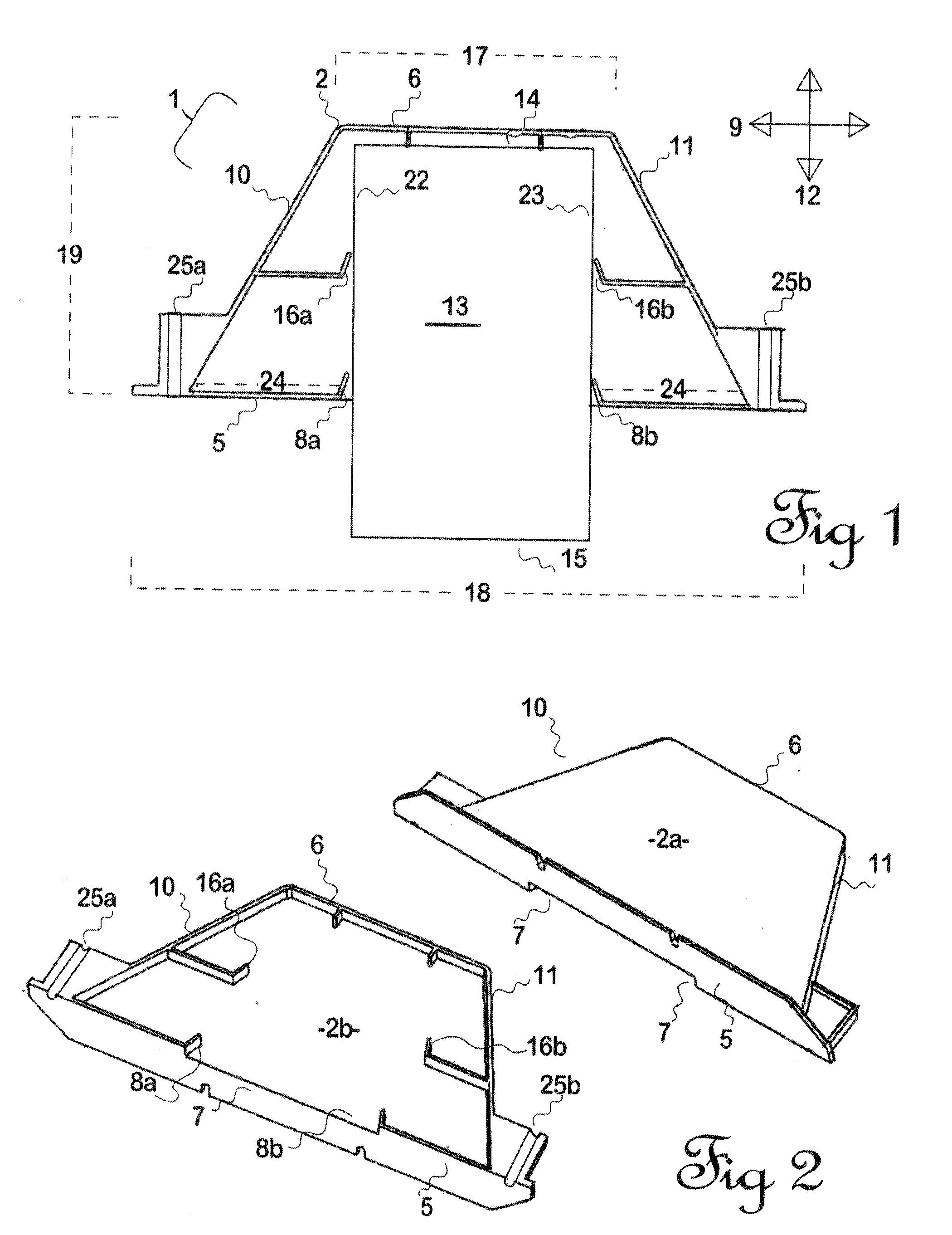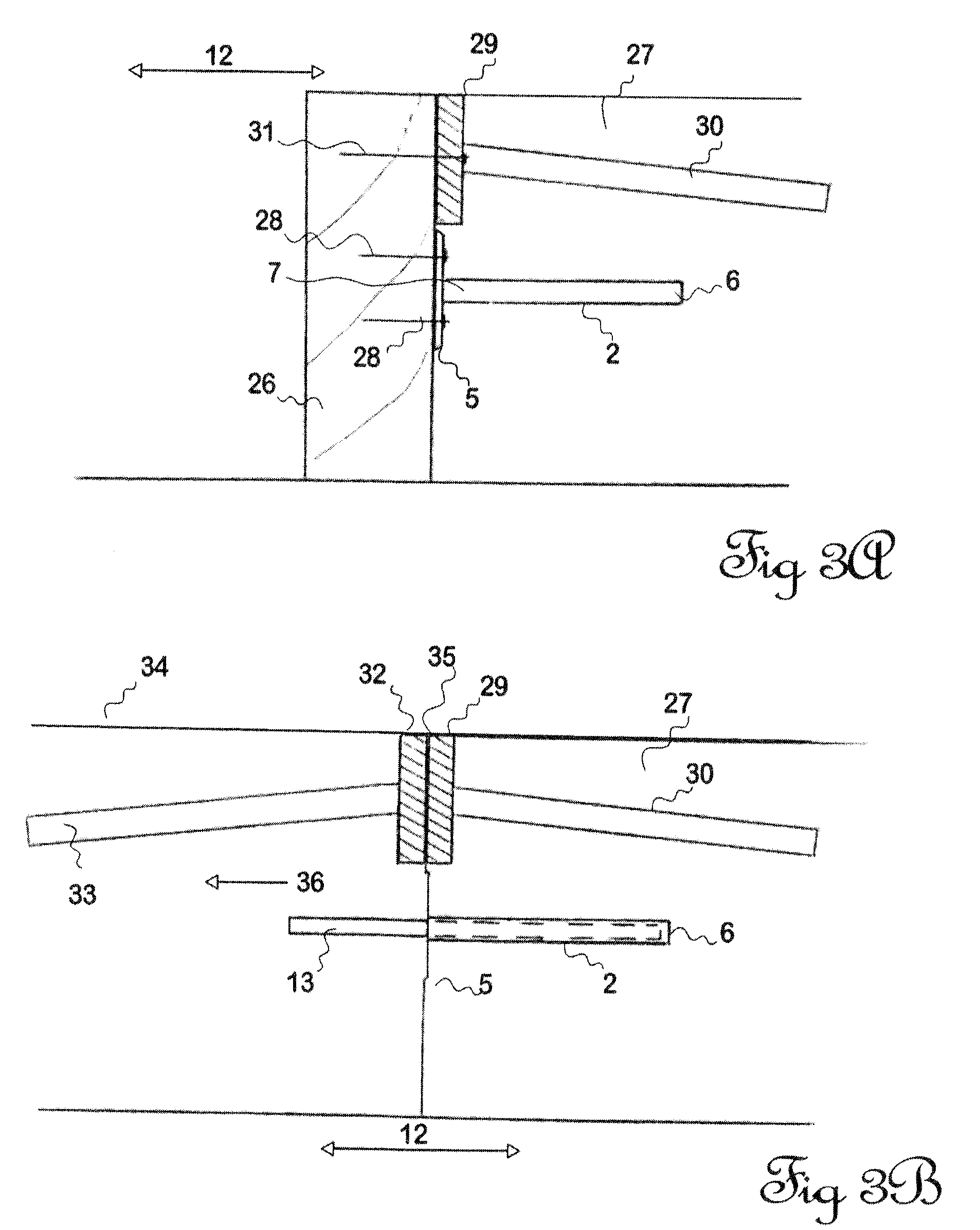Shear dowel assembly
a technology of diamond dowels and assembly parts, which is applied in the direction of roadways, paving details, roads, etc., can solve the problems of random and unsightly cracking, need for joints, and the performance of concrete floors are affected, so as to increase the differential movement of adjacent concrete slabs, and accelerate the load carrying capacity of diamond dowels
- Summary
- Abstract
- Description
- Claims
- Application Information
AI Technical Summary
Benefits of technology
Problems solved by technology
Method used
Image
Examples
Embodiment Construction
[0076]The description of a preferred form of the invention to be provided herein, with reference to the accompanying drawings, is given purely by way of example and is not to be taken in any way as limiting the scope or extent of the invention.
DRAWINGS
[0077]FIG. 1: is a cutaway plan view of one possible embodiment of a shear dowel assembly of the present invention,
[0078]FIG. 2: is a perspective, exploded view, of the dowel sheath illustrated in FIG. 1.
[0079]FIG. 3a: is a cross-sectional view of a joint to be formed between two adjacent concrete slabs, utilising a timber form and the embodiment of the invention as illustrated in FIG. 1,
[0080]FIG. 3b: is a cross-sectional view of the embodiment illustrated in FIG. 3a, after the pour of the second concrete slab, and
[0081]FIG. 4: is a cross-sectional view of a joint formed between two adjacent concrete slabs, utilising a metal form and the embodiment of the invention as illustrated in FIG. 1.
DESCRIPTION OF PREFERRED EMBODIMENTS
[0082]Wit...
PUM
 Login to View More
Login to View More Abstract
Description
Claims
Application Information
 Login to View More
Login to View More - R&D
- Intellectual Property
- Life Sciences
- Materials
- Tech Scout
- Unparalleled Data Quality
- Higher Quality Content
- 60% Fewer Hallucinations
Browse by: Latest US Patents, China's latest patents, Technical Efficacy Thesaurus, Application Domain, Technology Topic, Popular Technical Reports.
© 2025 PatSnap. All rights reserved.Legal|Privacy policy|Modern Slavery Act Transparency Statement|Sitemap|About US| Contact US: help@patsnap.com



